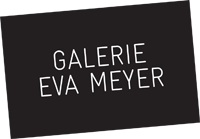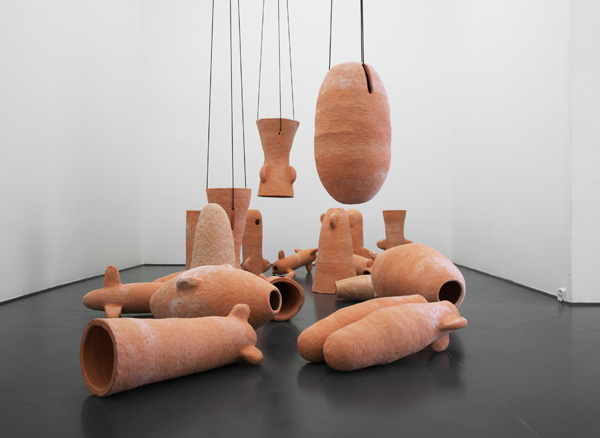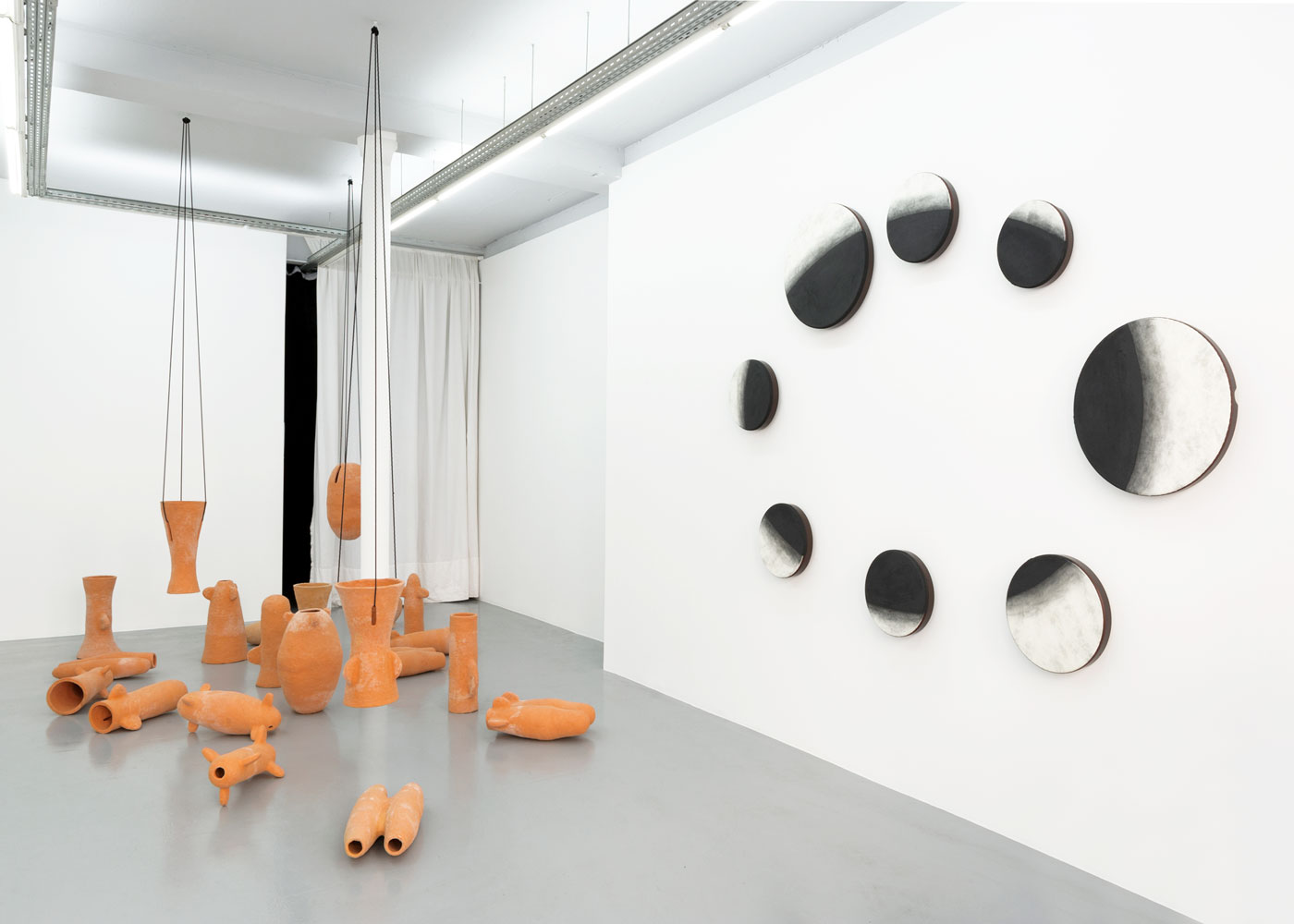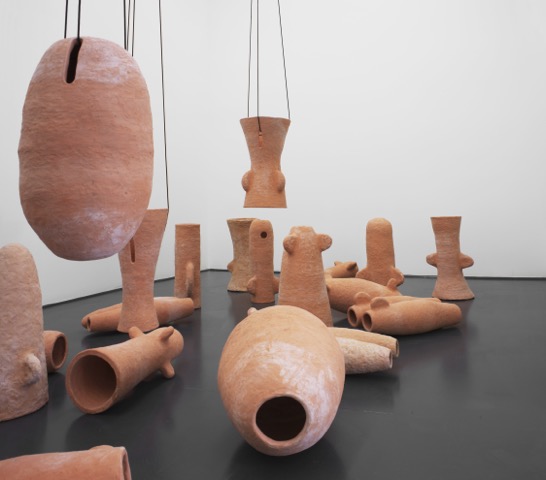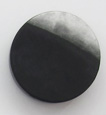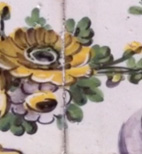JAN KOPP - GESPENSTER
03.09.16 - 12. 10.2016
Vernissage/Opening : 03.09 // 17h-20h
« Le voir précède le mot. L’enfant regarde et reconnaît bien avant de pouvoir parler.
Mais le voir précède également le mot en ce sens que c’est en effet la vue qui marque notre place dans le monde : les mots nous disent le monde mais les mots ne peuvent pas défaire ce monde qui les fait. Le rapport entre ce que nous voyons et ce que nous savons n’est jamais fixé une fois pour toutes. »
John Berger, Voir le voir, p. 7.
Ceux qui ont suivi le parcours de Jan Kopp depuis le début des années 1990 ne s’étonneront pas de voir ici se conjuguer une installation, du dessin et des vidéos. En effet, le travail de l’artiste ne se résume pas à l’usage d’un médium mais peut s’envisager davantage comme une réflexion, une proposition critique portée depuis plusieurs années sur différentes notions tout autant plastiques qu’ontologiques.
L’exposition Gespenster (spectres) présentée à la galerie Eva Meyer tire son titre de l’œuvre éponyme investissant le centre de la galerie.
Constituée d’une vingtaine de terres cuites de formes et de dimensions variées, Gespenster (2004/2015) se joue d’une lecture ouverte d’un fait libéré d’un contexte précis, laissant planer le doute et introduisant peu à peu un sentiment d’« inquiétante étrangeté ».
Rappelant à s’y méprendre l’inventaire d’un champ archéologique duquel on viendrait d’excaver de grandes amphores, les formes des céramiques, lorsque l’on s’en approche, semble suggérer certains missiles de guerres. Jan Kopp « brouille les pistes et livre dans le sillage des théoriciens de la forme une démonstration de l’existence préconscient qui influence notre perception du monde »[1].
Ce trouble perceptif s’immisce également au sein de Constellations ordinaires #7 – Peinture d’histoire manquante – (2016). Huit tambourins aux diamètres variables, recouverts partiellement d’un noir profond, dessinent au mur une ellipse fragmentée, symbole de l’ellipse narrative ou temporelle de cette histoire manquante intrinsèque à l’œuvre.
Le tambourin est un des premiers instruments utilisés par l’homme et ce, à travers les continents. Il ne s’agit donc pas de faire appel à une culture précise mais plutôt à une histoire originelle qui était transmise oralement à la façon des « conteurs » d’histoire. Cette œuvre fait également écho à la dernière production de l’artiste au Fonds Belval du Luxembourg où il s’agit de peindre l’ombre[2]. Cette ombre est suggérée dans Constellations ordinaires #7 par le biais du noir de fumée qui vient, couche après couche, s’apposer sur la surface du tambourin. Ce matériau organique, souvent utilisé pour le trompe l’œil, n’est pas sans rappeler les premières peintures de l’histoire, où l’ombre projetée était retranscrite sur les parois des grottes. L’installation même de l’œuvre créée un jeu d’ombre portée, en détachant légèrement le tambourin du mur auquel il vient s’accrocher.
Fragmentées en huit sections, ce jeu d’ombre et de lumière suggère également les huit phases de la lune, cycle infini de l’astre influent sur notre propre calendrier.
Ce dernier point, nous permet de relier ce septième opus de l’artiste reprenant le titre devenu leitmotiv des « Constellations ordinaires » à ses premières productions.
L’artiste le souligne lui-même : « Je travaille aussi à partir d’obsessions. Le temps en est une. Comment puis-je le traduire, le rendre sensible ? » [3] .
Les Constellations ordinaires viennent scander le parcours de l’artiste à la façon d’un journal, cristallisant ses recherches et préoccupations, ses influences et obsessions, permettant d’appréhender l’ensemble du travail à l’image d’une nouvelle temporalité artistique.
L’exposition se poursuit, en toute logique, dans l’obscurité de la deuxième salle où est projeté un cycle de quatre vidéos réalisées par l’artiste entre 2006 et aujourd’hui. Cette sélection nous amène à suivre les pérégrinations de Jan Kopp à travers différentes villes du monde. Tandis que la vidéo Im Treibhaus (2006) se concentre sur une vision hallucinatoire incrustée dans l’étalage d’un vendeur ambulant à Amman en Jordanie, Das Gebäude (2012/2016) nous emmène à travers la façade d’un bâtiment vers une histoire subjective de la ville de Berlin et The House (2009-2010) réalisée à partir d’une photographie d’architecture à l’abandon, retrace par un jeu d’apparition et de disparition, l’ambiance de Famagusta à Chypre.
Un souffle, une vapeur (2016) est produite à partir d’un film réalisé à Rio de Janeiro au Brésil. La vidéo s’ouvre sur un ensemble de points dessinés virevoltants à travers l’écran dans un mouvement permanent qui laisse peu à peu apparaître l’image filmée d’une fontaine. Si les autres vidéos pouvaient faire usage de changements de cadres et de jeux d’échelles, nous sommes face ici à un plan fixe. L’image donne à voir un carrelage aux motifs floraux au centre duquel est installée une tête sculptée de style néo-classique dont la bouche devait autrefois servir de fontaine. Non sans nous emporter vers un ancrage historique, notre regard se porte progressivement vers la bouche où semble s’agglutiner un essaim de petits insectes. Cette présence, figurée dans l’introduction par les points dessinés par la main de l’artiste, concrétise le mouvement de la scène. Entre contemplation et questionnement, le spectateur découvre également une bande son étrange où des voix incompréhensibles et sourdes s’entremêlent. Cette vidéo se place dans la lignée d’autres œuvres de Jan Kopp synthétisant ses recherches sur le langage et tout ensemble sémiotique[4]. La quête d’informations nous mène vers une atmosphère étrange voire inquiète. Cette bande son récupérée par l’artiste sur l’enregistrement originel met en exergue la place laissée au hasard au sein de ses productions. Une marge de manœuvre où se prolonge la création. La vidéo se termine sur le dessin de la sculpture et de son ombre.
A travers cette exposition, Jan Kopp amène à nouveau le spectateur à découvrir par le spectre de sa propre expérience un espace-temps redéfini par l’acte créatif, chargé d’évidences et de paradoxes, d’absences et de répétitions.
L’artiste semble pousser l’expérience sensible à dépasser les filtres culturels de la représentation jusqu’à questionner nos propres modes d’existence. En s’y frottant de plus près, les œuvres de l’artiste, d’apparence ludique ou issue d’un geste simple, révèle un regard inquiet mais bienveillant sur le monde.
Sophie Delhasse
[1] Valérie Clerc, Constellations ordinaires #4, communiqué de presse, mai 2015, Galerie Laurence Bernard.
[2] L’œuvre intitulée 2 février 2016 à 1h52 est réalisée par Jan Kopp dans le cadre de Public Art Experience au Fonds Belval. Cette peinture représente l’ombre projetée sur le bâtiment à précisément 1h52 le 2 février.
[3] La courbe de la ritournelle, Editions Filigrane, Frac Alsace, 2012.
[4] Timing the Allien (1999), Sannectamock (2001), Amoco (2000), Monstres (2005).
//ENG//
“Seeing precedes words. The child looks and recognizes well before being able to talk. But seeing equally precedes words in the sense that it is vision that marks our place in the world: words tell us about the world but words cannot undo this world that creates them. The relationship between what we see and what we know is never set once and for all.”
John Berger, Voir le voir, p. 7.
Those who have followed Jan Kopp’s progression since the early 1990s will not be surprised to see an installation, drawing and videos combined here. In fact, the artist’s work cannot be summed up in the use of a medium but can be more envisaged as a reflection, a critical proposal borne for the last several years by different ideas as plastic as they are ontological.
The Gespenster (ghosts) exhibition presented at the Eva Meyer gallery takes its title from the eponymous work investing the center of the gallery.
Comprised of about 20 terra-cotta pieces of various shapes and dimensions, Gespenster (2004/2015) plays on an open reading of an event freed from a precise context, letting doubt hover and gradually introducing a feeling of “disquieting strangeness.”
Looking almost exactly like the inventory of an archeological field from which large amphorae had just been excavated, the forms of the ceramics, when we approach them, seem to suggest certain war missiles. Jan Kopp “throws us off his tracks” and delivers in the wake of theoreticians of form a demonstration of the preconscious existence that influences our perception of the world.[1]
This perceptive disturbance also interferes in Constellation ordinaire #7 – Peinture d’histoire manquante – (2016). Eight tambourines with variable diameters, partially covered by a deep black, create a fragmented ellipse on the wall, a symbol of the narrative or temporal ellipse of this intrinsic story missing from the work.
The tambourine is one of the first instruments used by man, and this, on every continent. It is therefore not a question of calling on a specific culture but more an original story that was orally transmitted in the same way as story-“tellers.” This work also echoes the last production by the artist at the Fonds Belval of Luxembourg in which the idea was to paint the shadow.[2] This shadow is suggested in Constellation ordinaire #7 through the black of the smoke that, layer after layer, is laid on the surface of the tambourine. This organic material, often used for trompe l’oeil, recalls the first paintings in history, in which the shadow cast was transcribed on cave walls. The very installation of the work creates an interplay of cast shadows, slightly detaching the tambourine from the wall on which it is hung.
Fragmented into eight sections, this interplay of light and shadow also suggests the eight phases of the moon, the infinite cycle of the celestial body that influences our own calendar.
This last point permits us to link this seventh opus by the artist using the title that has become the leitmotiv of the “Ordinary Constellations” in his first productions.
The artist stresses it himself: “I also work using observations. Time is one of them. How can I translate it, make it sensitive?”[3]
The Constellation ordinaire cadence the artist’s trajectory like a diary, crystallizing his research and concerns, his influences and obsessions, making it possible to apprehend his body of work in the image of a new artistic temporality.
The exhibition continues, quite logically, in the darkness of the second room in which a cycle of four videos created by the artist between 2006 and today is projected. This selection leads us to follow Jan Kopp’s peregrinations through different cities in the world. Whereas the video Im Treibhaus (2006) focuses on a hallucinatory vision superimposed onto the shelves of a traveling vendor in Amman in Jordan, Das Gebäude (2012/2016) takes us through the façade of a building to a subjective history of the city of Berlin and The House (2009-2010), based on a photograph of abandoned architecture, traces, through an interplay of appearance and disappearance, the atmosphere of Famagusta in Cyprus.
Un souffle, une vapeur (2016) was produced based on a film shot in Rio de Janeiro in Brazil.
The video opens on a group of drawn points pirouetting across the screen in a permanent movement that gradually lets the filmed image of a fountain appear. If the other videos made use of changes in frames and the interplay of scales, we are faced here with a still shot. The image shows tile with floral motifs in the center of which is a sculpted head in the neoclassical style whose mouth once served as a fountain. Not without attracting us to a historical dimension, our eyes gradually turn toward the mouth where a swarm of small insects seems to adhere. This presence, represented in the introduction by the points drawn by the artist’s hand, concretizes the scene’s movement. Somewhere between contemplation and questioning, the viewer also discovers a strange sound track on which incomprehensible and muffled voices intertwine. This video is in line with other works by Jan Kopp synthesizing his research on language and taken all together semiotic.[4] The search for information leads us to a strange even disquieting atmosphere. This sound track that the author recovered from the original recording highlights the place left to chance in his productions. It is a margin for maneuver in which creation is pursued.
The video ends on the drawing itself of the sculpture and its shadow.
Through this exhibition, Jan Kopp once again leads the viewer to discover through the specter of his own existence a space-time redefined by the creative act, laden with obvious facts and paradoxes, absences and repetitions.
The artist seems to push the sensitive experience to go beyond the cultural filters of representation up to the point of questioning our own modes of existence. In coming as close as possible to them, the artist’s works, seemingly playful or derived from a simple gesture, reveal a disquieting but welcoming look at the world.
Sophie Delhasse
Translation Eileen Powis
[1] Valérie Clerc, Constellations ordinaires #4, press release, May 2015, Galerie Laurence Bernard.
[2] The work titled 2 février 2016 à 1h52 was done by Jan Kopp in the framework of the Public Art Experience at the Fonds Belval. This painting represents the shadow cast on the building at exactly 1:52 on February 2.
[3] La courbe de la ritournelle, Editions Filigrane, Frac Alsace, 2012.
[4] Timing the Allien (1999), Sannectamock (2001), Amoco (2000), Monstres (2005).
